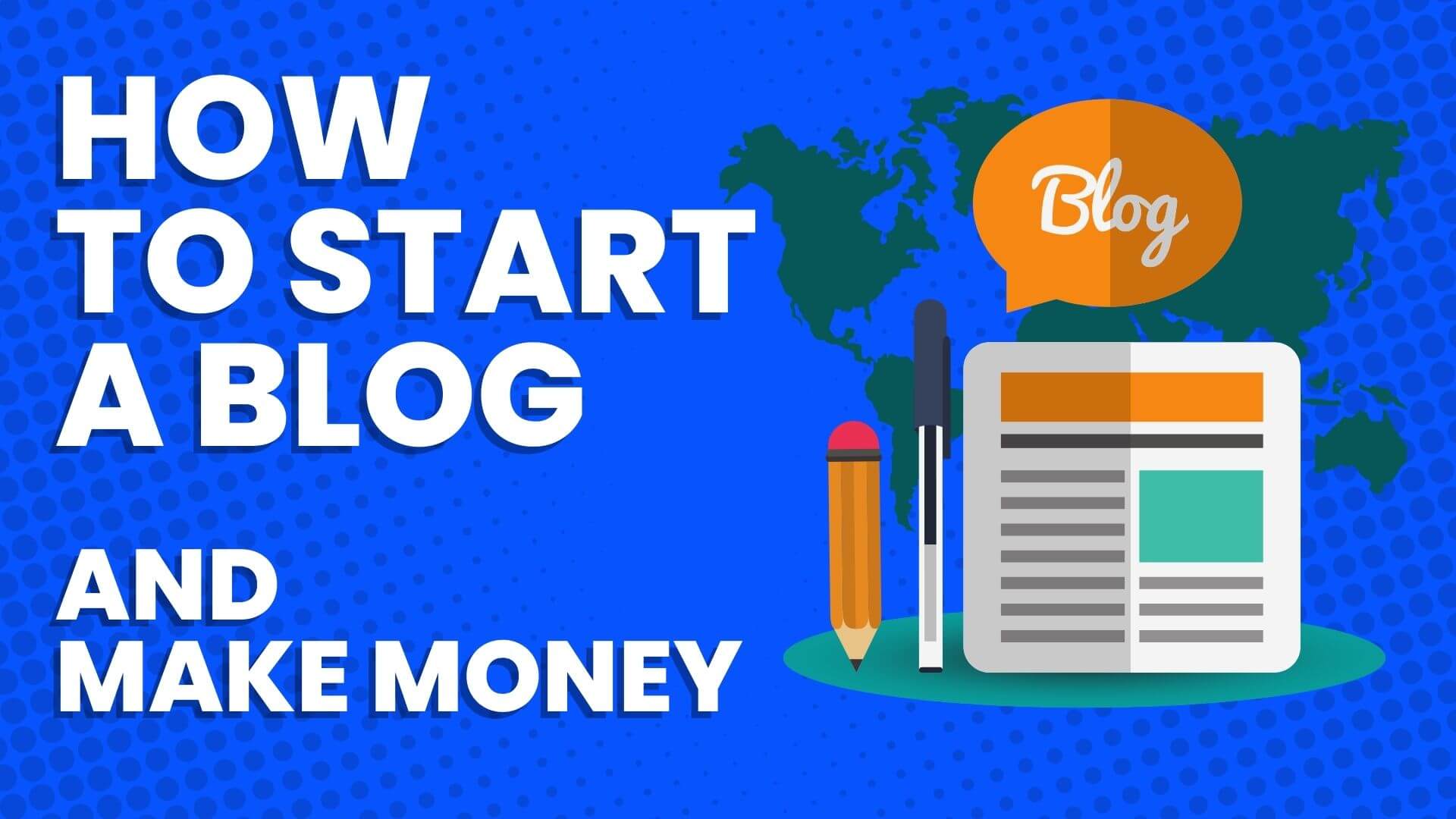How to start a blog in 7 easy steps?
Discover the strategies to make money with your blog. Follow this step-by-step guide on how to start a blog and get the chance to be featured in different popular business magazines. In searching for tips on how to start a blog, you will find a lot of old-fashioned procedures. Imagine you are getting directions from a paper map that hasn't been updated in a long time. Update your strategies for the twenty-first century to get the best approach to starting a blog. Here are the steps on how to start a blog:
1. Establish your blog.
How to establish your blog? Follow the steps below and and get the best features with the lowest price:
- Visit Bluehost.com and click Get Started Now.
- Choose the Choice Plus Plan to save more.
- Enter your desired FREE domain name (example.com).
- Fill in your account information.
- Under Package Information, select an account plan based on the length of your payment schedule. All plans come with a 30-day money-back guarantee. There is no risk!
- You may not check any package extras. It is not that necessary.
- Finish your purchase and create a strong password. You can now log in to your Bluehost account.
- Onboarding questions will appear. You can answer or skip them. Choose “blog” if prompted.
- Click "skip" as the selection of themes prompts. We have a separate discussion on themes.
- Access WordPress by clicking the WordPress button in the top right corner of the Bluehost dashboard.
Congratulations! You already created a self-hosted WordPress blog. Let's go back on selecting a name through a domain name registrar. Take into account that:
- Your name should be simple to type, and easy to remember.
- Your name is simple to spell and to pronounce to avoid confusing people.
- Better to not use hyphens or numbers in your own domain as they may cause confusion.
- Your name is somewhat broad. You may need it to pivot to a related niche
2. Choose a niche for your blog.
Niche is necessary for making a blog. There are countless things to blog about, no matter how unique your personal blog topic is. Majority of professional bloggers will advise you to start with a topic that you are passionate about. They will say that it will enable you to "keep a consistent writing schedule and survive failure to succeed." They will advise you as well to select a niche where your passion, skills, and experience meet. This strategy is flawed if you want to launch a website to earn money from blogging. Why? It's missing one key element: your brand of you. You are the brand of your blogs.
Consider these ideas on choosing your niche:
- The lesson you want to teach.
- The experiences that you may already have accomplished
- The leverage you may have in an industry.
- The area you can extract value from the market.
The basis of your niche is YOU. Your life is your niche. Your next step is to uncover your expertise. The expertise that we are talking about is not what you consider to be you are an expert at or want to be an expert at. It is your proven history of succeeding at. Do not mind if you are a newbie. Your expertise allows you to make money with a fresh blog. After displaying your expertise, you can now take an honest look at the market It is not enough that your niche is the one you are passionate about. You should ask how can you monetize this market. After knowing how to monetize this market, Consider the leverage you have in your life in choosing your niche. Ask yourself:
- What levers can you pull?
- Do you have connections?
- Do you have insider information on a market?
- Do you have an incomparable skill set?
- How are you uniquely positioned to leverage any and everything in your life that others wouldn’t be able to keep up with?
3. Install WordPress and begin your blog.
To begin your blog, choose the best blog platform for new bloggers. Self-Hosted WordPress is the best. Do you want to know what's the great news? Bluehost makes it simple to start a blog by installing WordPress with just one click from your dashboard. The first time you access your dashboard, you’ll need to choose your theme. 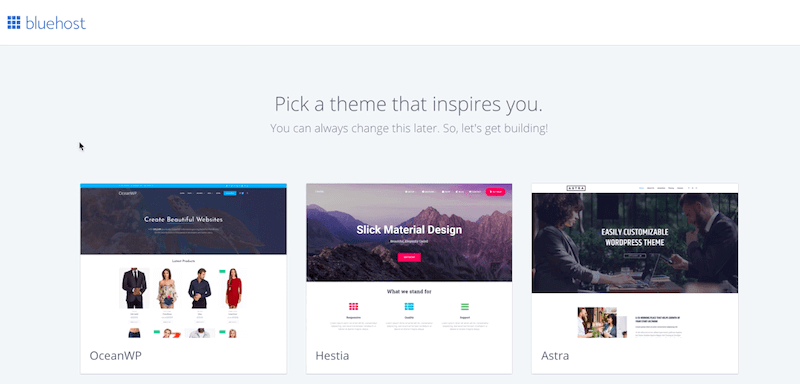 Numbers of attractive free WordPress themes are available. You can skip this step for the time being. Just click the "Skip This Step" option at the bottom of the page.
Numbers of attractive free WordPress themes are available. You can skip this step for the time being. Just click the "Skip This Step" option at the bottom of the page. 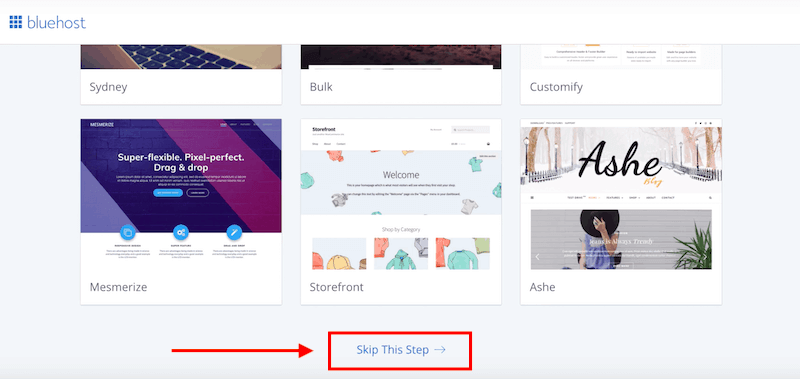 A new blog page will appear. Click on the “Start Building” option.
A new blog page will appear. Click on the “Start Building” option. 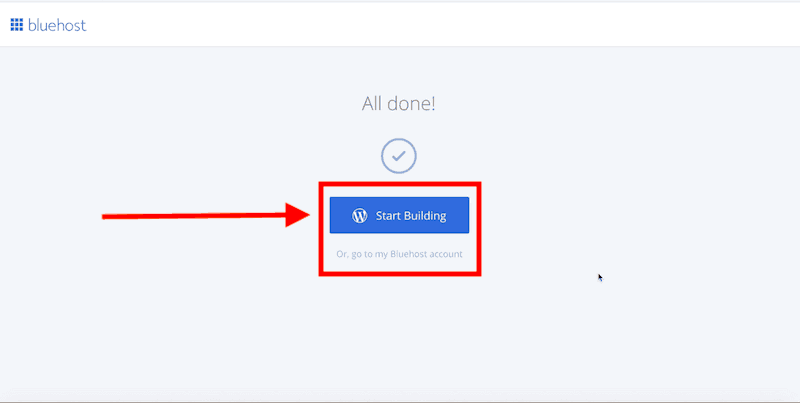 Choose the type of blog site you want to create, and WordPress will guide you through the process with prompts. You can go directly to your dashboard by clicking "I don't need help."
Choose the type of blog site you want to create, and WordPress will guide you through the process with prompts. You can go directly to your dashboard by clicking "I don't need help." 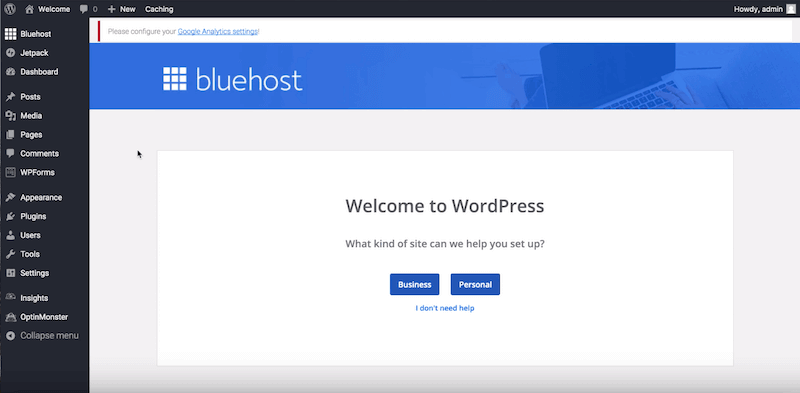 Enter your “Site Title” and your “Site Description.”
Enter your “Site Title” and your “Site Description.” 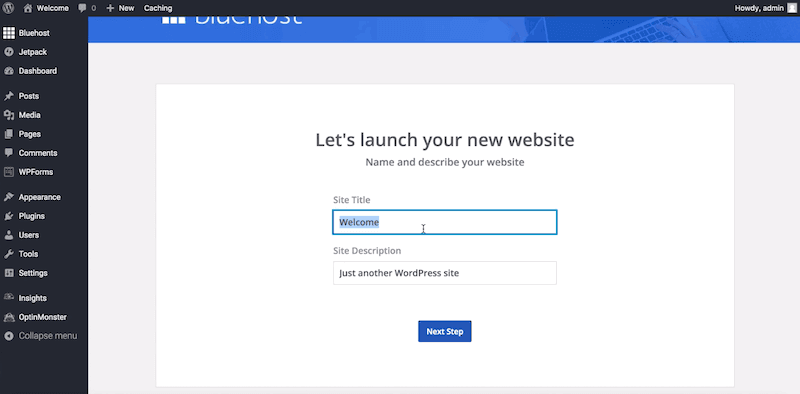 From here, make yourself familiar with the WordPress dashboard. This brings us to the next step, which is to select a theme for your blog.
From here, make yourself familiar with the WordPress dashboard. This brings us to the next step, which is to select a theme for your blog.
4. Choose your WordPress Blog Theme.
Your blog may currently look something like this: 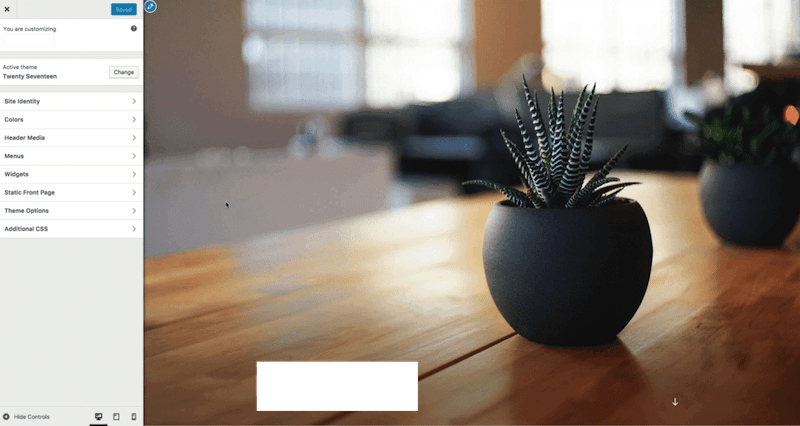 This is the default WordPress theme, and the menu on the left side allows you to customize its appearance. You have two options in choosing your themes:
This is the default WordPress theme, and the menu on the left side allows you to customize its appearance. You have two options in choosing your themes:
- Get a free theme with limited options
- Go with a paid theme.
ThemeIsle is recommended when choosing your theme to get a nice-looking theme for your blog. Here are the steps to install a new theme for your WordPress blog: First, access your WordPress login page by going to yourdomainname.com/wp-admin. Enter your username and password. 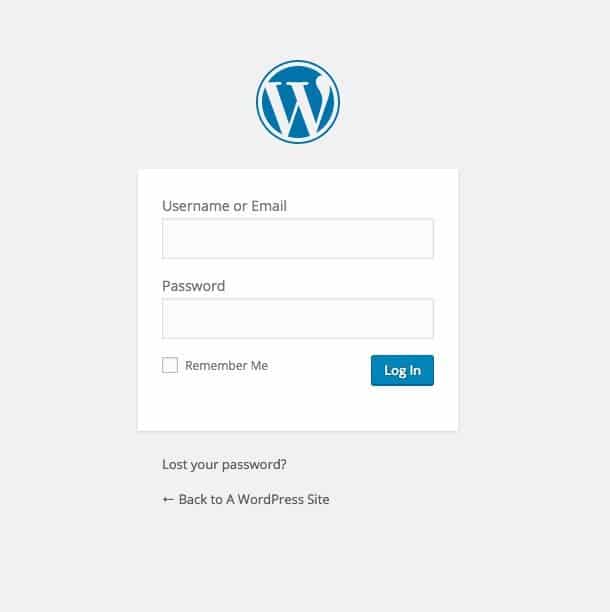 After you log in, your WordPress dashboard should look something like this.
After you log in, your WordPress dashboard should look something like this. 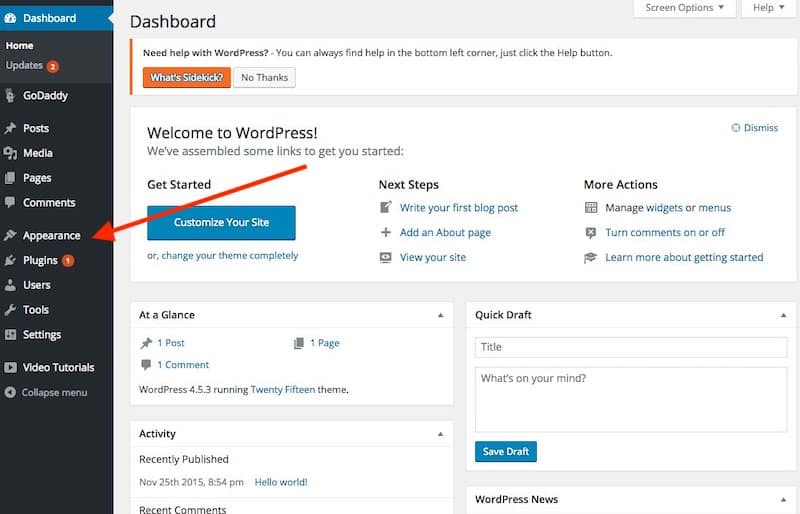 Looking at the sidebar menu, click "Appearance". From the “Appearance” section, select the “Themes” option
Looking at the sidebar menu, click "Appearance". From the “Appearance” section, select the “Themes” option 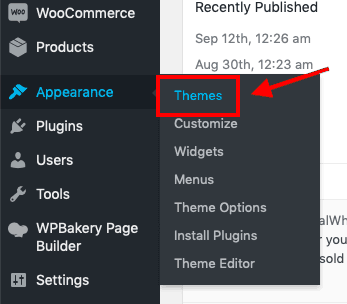 Click the “Add New” button at the top of the page.
Click the “Add New” button at the top of the page. 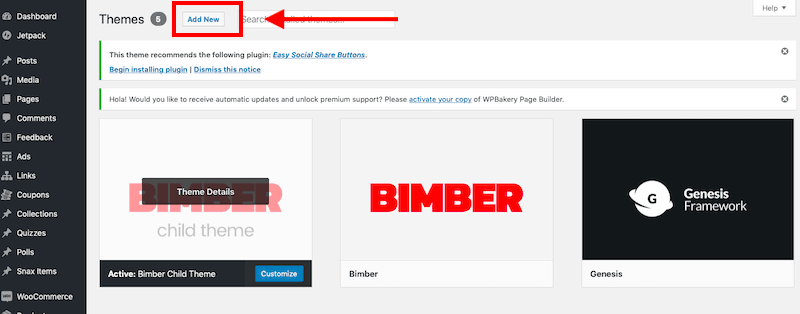 As you can see below, there are numerous free themes available. Preview as many WordPress themes as you want.
As you can see below, there are numerous free themes available. Preview as many WordPress themes as you want. 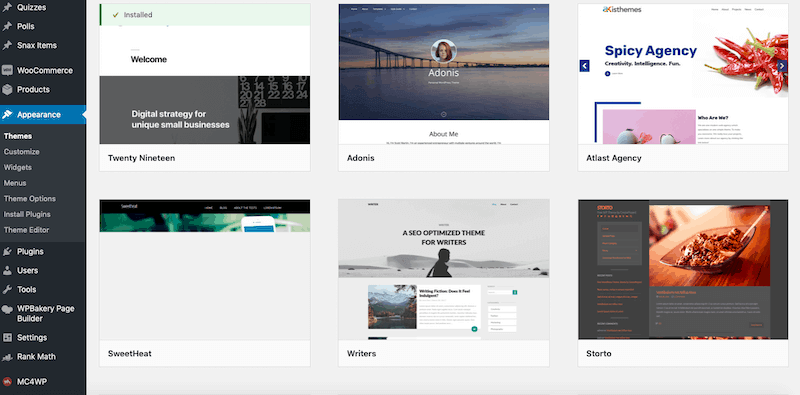 To install an external theme from a site like ThecmeIsle:
To install an external theme from a site like ThecmeIsle:
- Go to “Appearance” – “Themes”
- Click “Add New”
- Upload the zip file
- Click install.
That's all!
5. Install some basic WordPress plugins.
Plugins are sets of tools that integrate with your website and extend its features. Choose the best plugins for SEO and site speed.
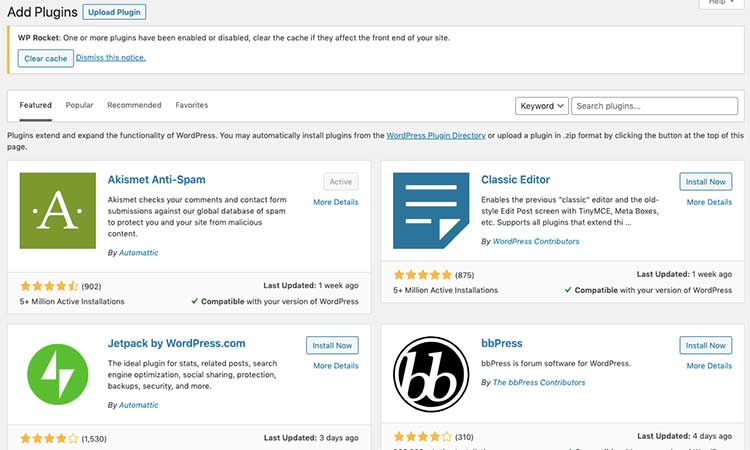
Here’s a list of four of the best ones you should add to your blog:
1. Elementor.
Elementor is a website builder that allows users to create and edit websites using a drag-and-drop interface and a responsive mode. A free version and a Pro version are available in Elementor.
2. ShortPixel Image Optimizer.
ShortPixel allows you to load your page faster by compressing an image.
3. WP Rocket.
WP Rocket is a site speed plugin that can do everything from minifying HTML, CSS, and JavaScript to integrating with your CDN and reducing database bloat.
4. Yoast SEO.
Yoast SEO is a WordPress plugin that helps you optimize your website's content and keywords to improve its search engine rankings.
6. It's time to create exceptional content for your blog.
Your blog that you created is now ready for blogging. Go on, and start your first blog post! Keep in mind first: You cannot just simply post an update and gain followers on your blog. Blogs are now Google-driven websites that require organic search traffic. With that, your main target keyword has a very significant role. List your top 5-10 keywords you want to cover and choose only one that focuses on your topic. After you have decided on your main target keyword, it is time to start writing. An important reminder of where the keywords should be placed:
- In your blog’s permanent URL.
- In the title of your post.
- To the first or second paragraph.
- Inside of your headings.
- Throughout your blog post.
Here's an example where the target keywords are included in the URL and the title of the post: 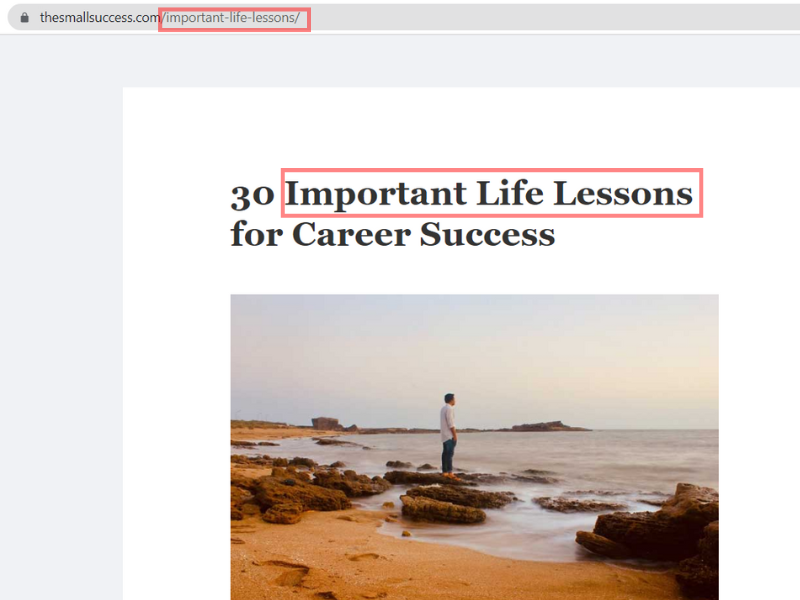 Include your keywords in the list given above. As you start writing, keep in mind that aside from text you can add audio, video, photos, infographics, and other types of visual content to captivate your audience's interest. Remember, your content should match the Google search intent and urge the users to take action on your blog. You can use keyword rank tracking software to monitor the position of your various keywords in search engines over time.
Include your keywords in the list given above. As you start writing, keep in mind that aside from text you can add audio, video, photos, infographics, and other types of visual content to captivate your audience's interest. Remember, your content should match the Google search intent and urge the users to take action on your blog. You can use keyword rank tracking software to monitor the position of your various keywords in search engines over time.
Writing Blog Posts that Match Search Intent.
How will your blog posts match the search intent? Consider what your reader actually wants when they conduct an online search about your targeted keyword. Let’s say your target keyword is “How to Lose Weight.” As you can see, the search results gave us a lot of new blog posts with feature titles including extra terms like Fast, Healthy, That Actually Work, and Without 'Dieting'. 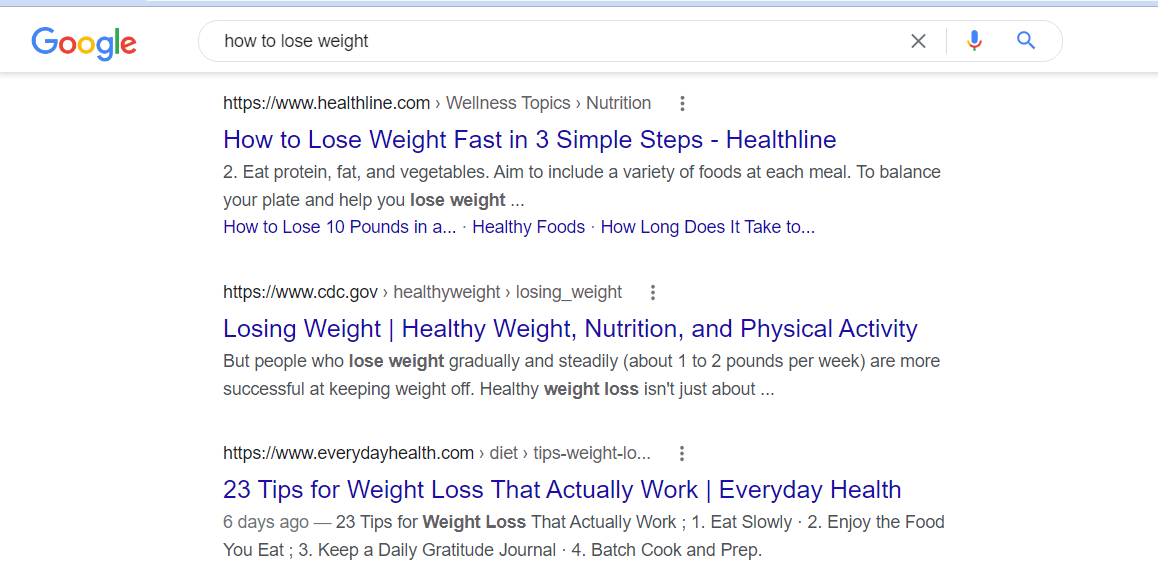 This means that most people want to lose weight as fast and healthy as possible. And Google’s PageRank is pushing these articles to the top. What does this have to do with your content strategy? You should get straight to the point and provide a list of the best methods for losing weight quickly. Don’t write a long post about “The Ultimate Guide to Lose Weight". Match search intent and provide the solution your readers really want to look for by understanding the meaning behind their search. To achieve that, examine which additional terms are included in the title tags of currently ranking content and reverse-engineer the search. Aside from that, make sure that you understand basic sentence structure and proper grammar. Short paragraphs, bullet points, and images help break up long, monotonous blocks of text and keep readers engaged. You can use grammar checkers with your blog like Grammarly.
This means that most people want to lose weight as fast and healthy as possible. And Google’s PageRank is pushing these articles to the top. What does this have to do with your content strategy? You should get straight to the point and provide a list of the best methods for losing weight quickly. Don’t write a long post about “The Ultimate Guide to Lose Weight". Match search intent and provide the solution your readers really want to look for by understanding the meaning behind their search. To achieve that, examine which additional terms are included in the title tags of currently ranking content and reverse-engineer the search. Aside from that, make sure that you understand basic sentence structure and proper grammar. Short paragraphs, bullet points, and images help break up long, monotonous blocks of text and keep readers engaged. You can use grammar checkers with your blog like Grammarly. 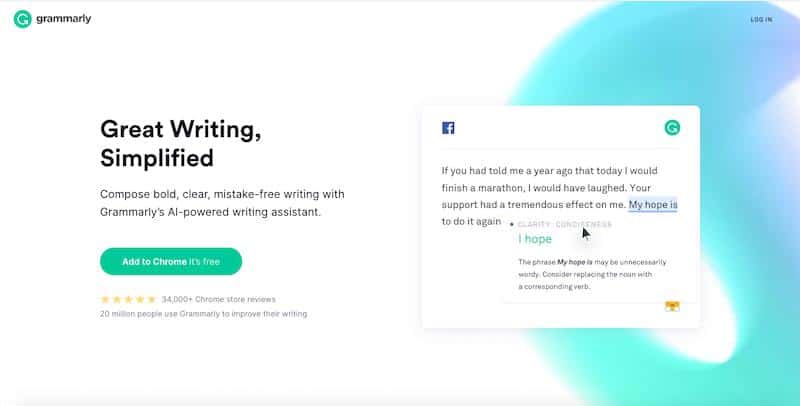
Additional Tips to Help You Write Better.
- Your blog posts should always be useful to your readers. Write with a clear beginning, middle, and end outline structure. Even the most mundane of topics can be made interesting if you understand story arcs and hero’s journeys.
- Make your blog's content appealing to readers and make it simple for them to access. The textual and visual content in the blog should be high-quality.
- Use the H2 and H3 tags to format your headings correctly, and break up long lines of text with images and bulleted lists. Limit your paragraphs up to 3-4 sentences.
- Write conversational blog posts to establish a connection with your audience.
- Use readable fonts and use white space to ensure your blog posts are easy to read.
- Include bullet points to make it easier for readers to skim the blog without missing anything important.
- Proofread for typos and grammatical errors.
- Emphasize some information by bolding the text**.**
Remember, a blog is progressive. You can update it over time. It is not necessary to make your blog perfect.
Create Your Home and About Pages.
Your blog's top menu navigation should include a few pages for readers to quickly understand your blog and find important information.
1. Home Page.
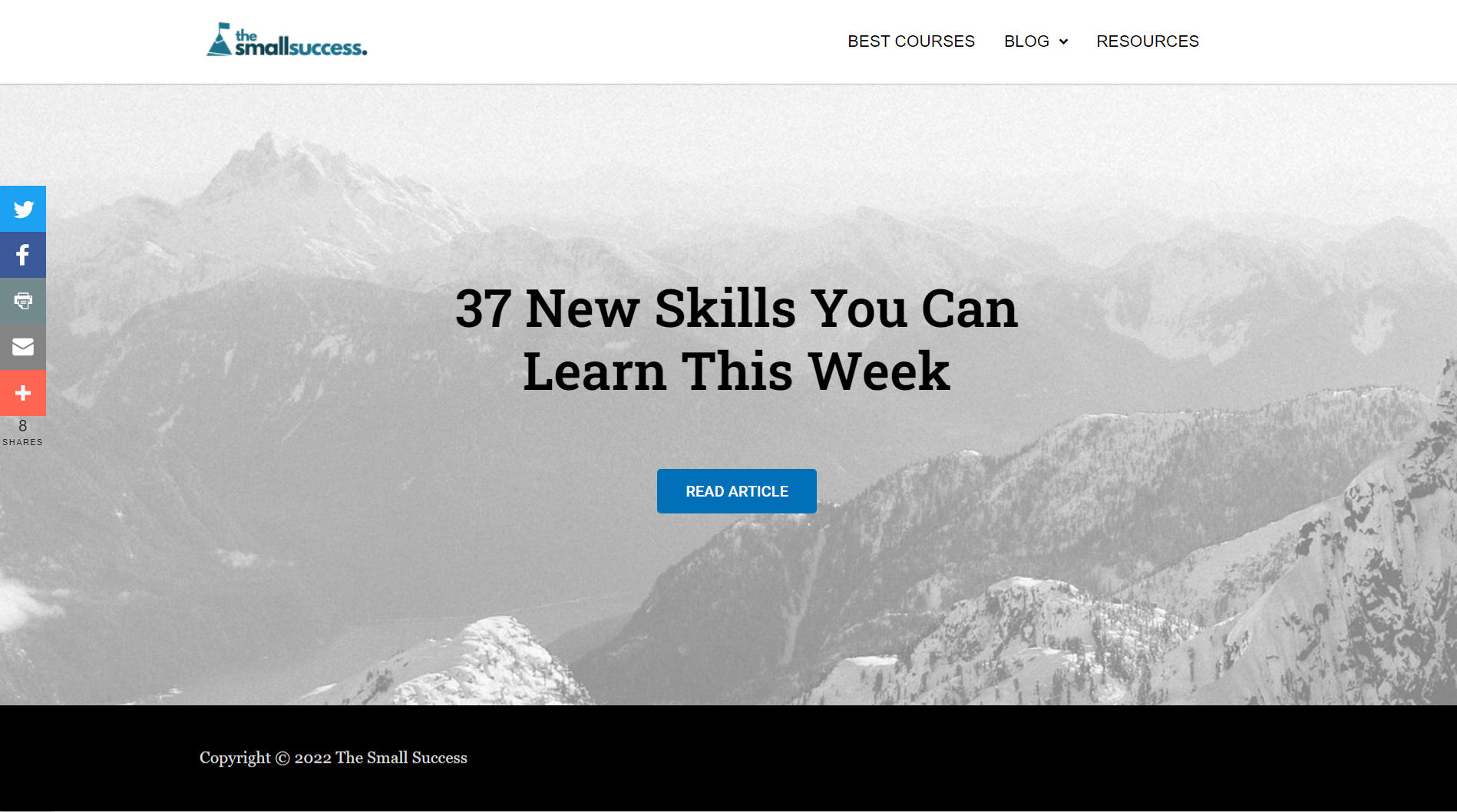 We all know what a home page is – it’s the main URL of your website. This page should not include every detail about your website. Its goal is to sell your one-of-a-kind value proposition in two seconds or less. If a reader visits your home page and doesn’t understand what your website is about right away, they may bounce and never come back. You can edit a WordPress homepage with a page builder like Elementor. It's a what-you-see-is-what-you-get page builder. Elementor is a tool that allows you to drag-and-drop content blocks, including text, images, videos, color blocks, and more. A good home page should contain:
We all know what a home page is – it’s the main URL of your website. This page should not include every detail about your website. Its goal is to sell your one-of-a-kind value proposition in two seconds or less. If a reader visits your home page and doesn’t understand what your website is about right away, they may bounce and never come back. You can edit a WordPress homepage with a page builder like Elementor. It's a what-you-see-is-what-you-get page builder. Elementor is a tool that allows you to drag-and-drop content blocks, including text, images, videos, color blocks, and more. A good home page should contain:
- A slider or hero image with a headline and subheadline
- A small section to tell your readers more about your blog
- The main call-to-action button that takes the readers to an important page, post, or email list opt-in form
- Internal links that point to your important content to help readers navigate your site
2. About Page.
The About Page of your blog should cover everything about you – who you are, what you stand for, and what your blog is about. It is where your readers see why your blog exists and why they should care. Connect with your readers, do not hold back! Make sure to write about:
- Who you are
- What inspired you to start your blog
- Your expertise or background to build trust with your readers
- The pain point you’re solving and how you’ve dealt with the same struggles as your audience
- Your success story
- A call-to-action.
People may not be interested in reading about all of your recent professional accomplishments. Let others know who you truly are. You can allow people to understand you without bragging about yourself to them.
3. Blog Post Template
One basic step in starting a blog is to create your blog post template page. Your blog mostly consists of posts. If you already have a ready-made template page, it will be easier for you to publish a post. Here are the guidelines for making a blog post template:
- The text must be easy to read. Make sure you use large enough font in black with a white background.
- The width of the text should limit to 850px. It will be hard to read if the texts are too far from left to right.
- Keep a proper line spacing.
Those are the main points you need to address if you are starting your blog post. It is helpful as well if you look at other sites to model (not copy) and reverse engineer what they are doing.
4. Blog Archive
Every blog has a “/blog” page and your blog shouldn’t be the exception here. In our blog site, we grouped our blog archive into different categories like business, career, and personal development. Note: If you are starting a blog from scratch, create a standard /blog archive page that displays your posts in chronological order. Make your blog page simple. Display a maximum of 10 posts per page.
5. Contact Page
Create a page with a contact form to let people get in touch with you if needed. Make sure that a confirmation message will prompt after someone submits a form. You can include a "thank you" message for reaching out and tell them to get back as quickly as possible.
Plan Your Future Content
You already know how to start a blog. The next thing to ask is how to prioritize new blog post ideas. Base your blog posts on keyword metrics, including search volume, difficulty scores, and how well you think you can rank for a keyword. Keep track of this inside of a simple spreadsheet with columns for your future posts, including:
- Target keyword.
- Blog post title.
- Monthly search volume.
- Word count.
- Priority.
Analyze Your Content
Use analytics tools like Google Analytics and Ahrefs to analyze the performance of your content. You absolutely need it. A Google Analytics account should already be established on your blog. Go to your GA dashboard to view metrics like site visitors, average time on page, total page views, and tons of other interesting stats. Examine traffic to individual blog posts over any time period. Compare it to previous periods to determine if your traffic is increasing or decreasing. With regards to tracking post rankings and inbound links, Ahrefs is the best search engine optimization (SEO) tool. You can see which keywords are ranking for you, which sites are linking to you, and much more.
7. Promote Your Blog.
The best strategy for promoting your new blog is to take all necessary steps to increase the number of links to it. The currency of the Internet is the links. The more you have, the more Google will take you seriously and rank a new blog post quickly after you publish it.
Guest Blogging
One of the best ways to advertise your blog is through guest blogging. With guest blogging, you can build authority in your niche, meet other bloggers, get exposure on various forums related to your niche, and get backlinks. Building relationships and sending cold emails are both parts of this hustle. Think about providing value to others first. The benefits you'll get from the backlink will follow.
Link Building
First, the best form of link building involves passively acquiring links without any outreach or involvement. Isn't it amazing? Audiences naturally link to the best content they can find. How can you guarantee that your blog posts can be "linked"? To start a linkable blog, your content needs to be original and high-quality. That’s the basic entrance fee to get into the game. Take your blog post to the next level by adding visual elements. Include infographics, videos, case studies, statistics, and any other unique content that isn't already available online. Here are additional link-building techniques to try out after you set up a blog:
- Broken link building. Help blogs in your niche fix their 404 error (the broken external links by using Ahrefs. Inform them via email that their link is broken and your resource is a better option.
- Link reclamation. Link reclamation is the process of trying to recover links that you have lost from other content. You can use Ahrefs Content Explorer to find those lost links. After tracking the lost links, You can get in touch with the post's author, thank them for the mention, and request that they add the link.
- Link partnerships. Build relationships with other bloggers in your niche to get links in their guest posts and vice versa.
- Competitor research. Look at which websites link to your competitors to find new websites to contact.
Search Engines And Blogging
How do you get people to your blog? The simple solution is to use blogging SEO. Potential readers and subscribers typically discover new blogs through search engine listings. Readers will only know you exist if they can find you, and much better if you are ranked highly in search results. You are not just going to write content that readers will love. You must make sure that your blog can be found in search engines. Search engine ranking is something that every blogger wants very much to achieve. It will give life to your blog posts. It will take time and patience. Don't give up! It is achievable. The secret to getting high rankings is actually quite simple; all you have to do is make sure Google understands exactly what each page of your blog is about. Avoid saying “This post is about this” or “This post is about that”. Use words that would appear in Google searches by future readers looking for information on the subject of your article. Just think of it as a good way to ensure that Google knows what your page is about. You’ll naturally start appearing for relevant search results.
SEO title tags
This is the information that appears in search engine results and encourages the audience to click on your blog. Many times, people search for specific words. With that, it is important that the title tag needs to make sense. It can be the same, different, or similar to the title of your articles As you think about your SEO title, you should consider that search engines will truncate the title tag to about 160 characters. Don’t forget to include the main keyword/s you are targeting in your title.
Meta description
The next on-page SEO factors to consider are meta descriptions. These are the words that appear beneath your blog post on Google.  They provide a brief summary of the page's content. Use these to give readers a good idea of what to expect from your blog.
They provide a brief summary of the page's content. Use these to give readers a good idea of what to expect from your blog.
Sitemap
Next is the sitemap. It helps search engines direct search engine bots to your blog. It lets the bots know about all the pages you have. You should submit a sitemap via Google Search Console as this ensures that new content added to your blog can be indexed as quickly as possible. In the directory structure that you create, pay close attention to categories and subcategories. This will be shown in the sitemap. It's crucial to make sure you provide the search engines with as much information as possible about your blog.
Widgets
Widgets are blocks of content that you can add to your WordPress sidebars, footer, and other widget areas of your website. This means that including elements like RSS feeds, author bios, and related posts in your blog posts will assist in directing relevant readers to your site from search engines. Widgets help blogs make them more functional and attractive as well. On-Page SEO Aside from title tags, meta description, sitemap, and widgets, on-page SEO is very important. With on-page SEO, you can properly format your blog posts and rank them on search engines. To do that, make sure that your target keywords are in the URL, the H1 (title), the first H2 in the form of a question, and throughout the content. You can use tools like Jasper and SurferSEO to optimize your blog posts for SEO.
How to Start a Blog: Summary
As you can see, starting up a blog is not too difficult. It's pretty easy, right? These are the 7 steps on how to start a blog:
- Choose a niche.
- Pick a blog name and web hosting.
- Install WordPress.
- Picking your blog’s theme.
- Install WordPress plugins.
- Create great content.
- Promote your blog.
Maybe, the difficult part in creating a blog is the content strategy, link building, and monetization. Ultimately, a successful blog depends on how quickly you can scale your efforts to publishing content and to link-building. That’s the way you rank on Google for profitable terms and earn affiliate commissions – getting to page 1.
How to Start a Blog: FAQs (Frequently Asked Questions).
1. What is a Blog?
A blog is a website or section of a website that features regularly updated content on a particular subject and presents information in reverse chronological order. It consists of text written in an informal, conversational style. It's a fantastic way for bloggers to grow their subscriber base, connect with new people, and earn money online.
2. Why Should You Start a Blog?
One of the main reasons is to influence and inspire online readers. You can really help others if you have in-depth knowledge of your industry and competent writing skills. Your blog's proper monetization can generate a decent passive income for you. You can use your blog as the perfect opportunity to:
- Improve your personal development
- Make your writing better
- Build new relationships and network in your field
- Share your knowledge with your audience
- Earn a lot of money
3. How Much Does it Cost to Start a Blog?
Sometimes starting a blog costs free. Sometimes it is paid. You can choose between a free and a paid blogging platform. WordPress.com and Blogger are two great free blogging platforms that allow you to get started without having to pay anything upfront. The downside of a free tool is that there are always restrictions. Better themes, restrictions on advertisements, and other paid features won't be available to you. You might choose paid platforms if you're an experienced campaigner or a beginner who is comfortable blogging. Website builders like Squarespace and Wix offer excellent paid plans that enable you to completely customize your site. With these platforms, you can add sophisticated features like an online store, drag-and-drop editors, and more to your website, including search engine optimization. Listed below are a few of the necessary expenses:
- New domain name
- Hosting
- Optional expenses like premium WordPress theme, marketing tools, any additional SEO plugin needed plus those for other purposes, and more
It should be free if you're considering blogging as a hobby. If you are a full-time blogger and willing to invest in additional features to scale up your blog, it may cost over $400 per year.
4. How Do I Get Readers to My Blog?
To get readers to your blog, you have to provide value to your readers. Here are some steps that’ll help get you there:
- Master SEO (Search Engine Optimization).
- Create catchy headlines. Your headline is the first thing someone reads. Help them understand the advantages by listing them. The ideal clickable headline is: Odd number + superlative + target keyword + year.
- Publish blog posts consistently as it makes your readers take you more seriously.
- Use call-to-action (CTA) buttons and opt-in forms to make your readers act.
- Offer incentives to current readers like product discounts and insider knowledge.
- Share your posts on social media.
Implement all the steps mentioned above to help your blog gain some early traction.
5. How Do I Start a Successful Blog?
Some essential elements for starting and maintaining a successful blog include:
- Recognizing potential audience revenue and market viability
- Being well-versed in digital marketing (SEO, keyword analysis, affiliate marketing, email marketing techniques, etc.)
- Being great at self-promotion
- Offering value-based content
- Providing content consistently
- Creating a schedule and sticking to it
- Engaging subscribers proactively and solving their pain points
6. Do Bloggers Get Paid? How Do Bloggers Get Paid?
Yes, bloggers do get paid. The pay for bloggers can be very financially rewarding. Others don't profit at all from their blogs. Breaking it down, bloggers mostly get paid through:
- Advertisements
- Affiliate marketing
- Online courses
- Sponsored posts
- Selling products
- Consulting
It's challenging to make money if your blog posts don't provide much value.
7. Can You Start a Blog for Free?
Yes, you can start a blog for free. It's not expensive to start a blog. It is your decision if you want a self-hosted or a fully-hosted platform. Self-hosted platforms are free and most beginners choose them. Usually, using a fully-hosted platform costs a small monthly fee. If you’re serious about blogging, it is recommended to go with a paid option. Choosing a free platform restricts you to many great features and has a low chance of earning money. With almost unlimited revenue potential, you should pay to host your blog.
8. How Do I Start a Food Blog?
Food and recipes are some of the most popular things people search for. Now is the perfect time to start your food blog. Here are some steps to do just that:
- Choose your web hosting company.
- Select a perfect name for your blog. Make sure it is relevant to your niche.
- Choose the perfect theme for your food blog. The right theme can attract viewers instantly and help you increase your subscriber base.
- Perform keyword research and choose a sub-niche in the food space.
- Start posting and learn how to write recipes in an SEO-friendly manner.
- Get backlinks and guest posts from other food blogs.
- Find out ways to monetize your blog if you want to sustain it. Third-party advertisements, affiliate marketing, and selling exclusive recipes are some ways to do that.
9. How Do I Start a Travel Blog?
Most people are passionate about traveling. If you are too, you can begin your travel blogging career and earn money from blog affiliate sales. A lot of travel affiliate programs pay for recommendations. You can feature anything like hotels, Airbnbs, travel gear, travel insurance, etc. Here’s how to get started now with a travel blog:
- Determine the sub-niche of your blog. There are plenty of options, including solo traveling, luxury traveling, budget traveling, family travel, and more.
- Decide on a name that’ll be an instant hit with your target audience.
- Set up web hosting.
- Get the perfect theme for your travel blog.
- Perform keyword research and choose a sub-niche in the travel space.
- Publish travel articles based on your expertise, and format them for SEO.
- Obtain backlinks and guest posts from other travel blogs.
10. How Do I Start a Fashion Blog?
If you’re interested in the latest styles, it is a great idea to start a fashion blog and tap into that interest. The downside of doing a fashion blog is that the industry is overwhelmed. You have to make extra efforts to start and grow your fashion blog. Here’s how you can start your fashion blog:
- Think about what type of fashion you want to talk about in your blog. Fashion can be a broad term. It is essential to pick a particular style or niche. Do you want to blog about high fashion or street fashion? Vintage or Gothic?
- Get your own perfect domain name that will resonate with the audience right away. Avoid choosing a free domain name that contains other brands.
- Choose your hosting provider.
- Select the theme that best suits your style and the fashion you want to talk about.
- Create content consistently. Never miss out on blogging.
- Promote it on social media platforms. Do not forget to share it on Instagram.
- Give the maximum exposure you can. It's a fashion blog! Monetize it through social media, podcasts, and advertisements. You need all the attention you can get.
11. How Do I Start a Beauty Blog?
If you have a passion for beauty products and the latest trends, starting a beauty blog could be for you. This type of blog is best paired with a YouTube channel and Instagram account. Here’s how you can start a beauty blog:
- Think about what you want to talk about in your beauty blog. Oily vs. dry skin? Fair vs. dark complexion? The list is endless, and it’s up to you to decide your focus area.
- Pick your blog’s name. A catchy, memorable name is perfect for beauty blog and can attract the right audience.
- Again, choose a hosting plan and install a beauty blog theme.
- Do keyword research on the how-to keywords that people are looking for.
- Schedule your articles and make sure to embed YouTube tutorials into your posts.
- Advertise on social media and via email newsletters.
- Provide video tutorials and share beauty tips to increase your subscriber base.
12. What is WordPress?
WordPress is the simplest, most popular platform for building websites and blogs. A WordPress site helps you create, publish, and share web pages. It is one of the most user-friendly platforms to host blogs. And you only have to pay for the domain name and web hosting. It is a feature-rich CMS (content management system) that allows bloggers to create, edit, and publish content. It features a dashboard where you can edit posts, media, pages, comments, plugins, themes, users, website settings, and more.
13. Should I Use WordPress.com or WordPress.org?
WordPress.com and WordPress.org are two very different platforms. WordPress.com offers an end-to-end solution to start a simple website for free. You need to sign up, and you are all set to build your website. WordPress.org is an open-source website platform that can be leveraged only through a paid hosting account. Here are some key differences between the two platforms to help you make a more informed decision: 1. Cost: WordPress.org costs entirely free. The disadvantage here is that you need to buy website hosting and a domain name to make the website visible and published. WordPress.com enables users to create a free blog with a WordPress Name. A custom domain name will cost $4 per month. 2. Setup: WordPress.org takes some level of technical expertise to set up a blog or website on WordPress.org. The technical requirements include buying hosting and a domain name and integrating them with the website. WordPress.com provides step-by-step instructions to make setup simple. 3. Themes: WordPress.org offers excellent options with 7,500+ free themes. Users have access to thousands of premium themes as well. WordPress.com comes with limited customization options. Free and personal plans offer over 150 themes, and other premium plans offer over 200 paid themes. 4. Plugins: WordPress.org enables users to access 50,000+ plugins along with thousands of other third-party plugins. WordPress.com allows the installation of plugins in only business or ecommerce plans which cost $25 and $45 per month. The plans offer 50,000+ plugins like WordPress.org. Now it's up to you to choose the platform that best fits your needs.
14. How often should I backup my blog?
Backup your blog regularly. Make it into your priority to ensure that your blog can be fully restored after any problems and crashes. You can use plugins to backup your blog automatically.
15. Can I sell Amazon products on my blog?
Yes, you can. There is a plugin available from Amazon that allows people to sell. Make sure that the products you sell are relevant and valuable to your current readership.
16. Can I put Google Adsense on my blog?
Yes, you can put it. Just make sure that you adhere to Google's strict terms and conditions. With that, you can avoid difficulties on running these types of ads on your blog.
